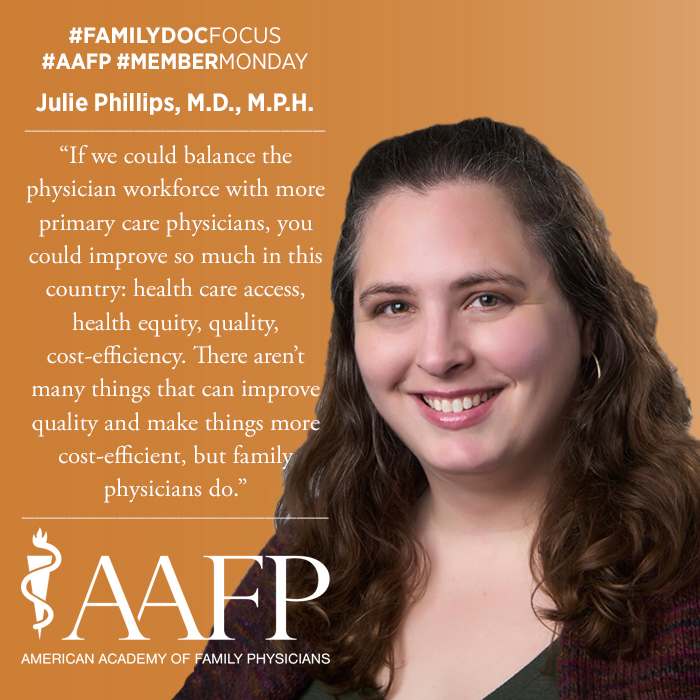Expanding the Primary Care Pipeline
September 10, 2018, 09:02 am David Mitchell – When the family of family medicine organizations met Aug. 30-31 at AAFP headquarters in Leawood, Kan., to discuss an ambitious workforce pipeline project, Julie Phillips, M.D., M.P.H., was a featured speaker.

It was an easy choice for the meeting's planners. Although one can't say that Phillips, an associate professor in the Department of Family Medicine at the Michigan State University College of Human Medicine, literally "wrote the book" on medical student specialty choice, the research portion of her curriculum vitae reads like a table of contents on the subject. Ten years into her practice, Phillips has authored 40 peer-reviewed journal articles, including 29 on issues that affect student choice.
Phillips' research already has covered issues related to student debt and loan forgiveness. Now, she said, she is looking at the roles medical schools and their leaders play in affecting the primary care physician pipeline. Phillips and her colleagues are conducting a systematic review of roughly 6,000 papers that have examined which methods are effective in influencing specialty choice at the med school level. She said about 150 articles have met the team's research criteria so far.
"Some schools understand -- but many don't -- the importance of family medicine," said Phillips, who also is an assistant dean for student career and professional development at Michigan State. "It's not their issue. They don't understand the public health impact of primary care. If we could balance the physician workforce with more primary care physicians, you could improve so much in this country: health care access, health equity, quality, cost-efficiency. There aren't many things that can improve quality and make things more cost-efficient, but family physicians do. The health of our whole country would get better in ways that would be visible and remarkable if we could fix this one thing. We have to convey that to our institutional leaders."
Phillips' interest in workforce issues dates to her own training. She took a break between her third and fourth years of med school to complete a master's in public health degree. A common topic was the primary care physician shortage, and that societal need influenced her decision to pursue family medicine.
Phillips started her first research project as a resident. The resulting article on debt and specialty choice was published in Family Medicine in 2010, her first of three articles related to workforce issues published that year.
"It was an awesome experience," Phillips said. "It's still cited a lot. I just kept going."
Phillips, who also sees patients, said it's important for students and residents to realize that thriving research careers are possible in family medicine.
"There are so many important questions," she said, "and it's really enjoyable. Family physicians are so collaborative. We're working on the same goals."
At the recent meeting at the AAFP, representatives from several family medicine organizations discussed their shared goal of more than doubling the match rate for family medicine to 25 percent of U.S. seniors by 2030.
"It's an ambitious goal," she said. "If you think about what it should be, what it needs to be, it would be higher. But if you think about what's feasible, it's a good, challenging goal."